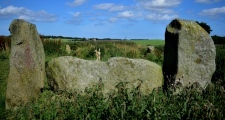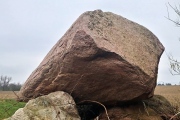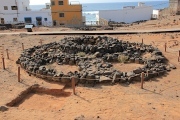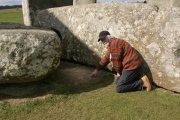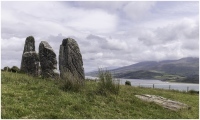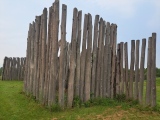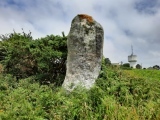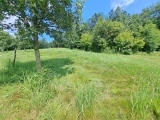Andy Burnham's Blog, page 57
August 17, 2024
Strichen House
A very small, but beautiful recumbent stone circle situated on a hill in Strichen Community Park. Quite easy to reach, although not well signposted! When it was excavated, fragments of white quartz were found scattered within the circle. Well worth a visit.
Published on August 17, 2024 06:01
Grevlerupgård Runddysse 1
A free standing dolmen with six orthostats, one capstone and one threshold stone. With a beautiful, angular, red sandstone cap stone. Situated near to Grevlerupgård Runddysse 2 - see the nearby sites list further down our page.
Published on August 17, 2024 06:01
Young Ralph Cross
This 10 foot tall wayside cross is possibly 11th Century. Made of hard gritstone with a large, roughly shaped base. The lower part shows much-weathered interlace ornamentation and a cable-moulded border. The cross has been restored by adding a new (possibly 18thC) head with a nicked top, cementing this into its socket.
Published on August 17, 2024 05:50
August 15, 2024
La Guancha
Ancient settlement and cemetery with big remains of burial mounds close to the sea. The most interesting part of the area is the biggest tumulus which is similar to a cartwheel with two centres. It was excavated in 1935 and thirty relics of pre-hispanic Canariens were retrieved. Close by you can see further remains of house footings.
Published on August 15, 2024 02:15
August 14, 2024
New Mineral analysis indicates Stonehenge’s Altar Stone originated from Scotland
By Dr Rob Ixer and Prof. Peter Turner, two key Altar Stone researchers. A new analysis of Stonehenge’s central six-tonne Altar Stone indicates that it is likely to have come from north east Scotland, at least 750 kilometres away from its current site in Wessex, and perhaps more than 1000 kilometres if it travelled following the present-day coastline. Plate tectonics and precise radiometric age dating are the keys to this discovery.
Published on August 14, 2024 08:00
August 12, 2024
Cloonsherragh
Stone Row in Co. Kerry. Clive Ruggles has suggested an alignment to the summer solstice sunrise over nearby Mt Brandon.
Published on August 12, 2024 01:51
Aztalan State Park
A group of mounds of the Mississippian Culture, in Aztalan State Park, Jefferson County, Wisconsin. The mounds were made between 11th and 13th century CE, although the site was originally occupied by an earlier culture, around 900 CE by Late Woodland Culture people who made their living by hunting and gathering with some corn production.
Published on August 12, 2024 01:51
August 11, 2024
Couinandré Menhir
This is a nicely curved menhir just down a little track and signposted east of Plouescat. Its about 4 metres tall, but in a strange position, not on top of the hill or by the stream.
Published on August 11, 2024 09:16
Risbyvejen
In 1973, in this meadow by the Risby Å stream on the island of Sjælland the National Museum of Denmark excavated an exceptionally well-preserved 36 x 3 meter stretch of cobbled trackway dating from around 1000CE (Viking Age). Subsequent research has shown that this road is but one of many passing through this junction for traffic across the originally marshy meadows bordering the stream. Around 30 timber trackways as well as four cobbled roads have been found in the area - the oldest timber trackway dating from around 3500 BCE.
Published on August 11, 2024 09:13
August 9, 2024
Nitschke Mounds State Park
Photos, plans and video commentaries on these mounds from Stonetracker on our page, see the comments section for the videos. Nitschke Mounds Park is located near the center of Dodge County adjacent to the Wild Goose State Trail and just west of the Horicon Marsh. The property contains 37 preserved animal effigy, conical and linear mounds believed to have been constructed around 800 AD - 1100 AD. Nine additional mounds identified in 1927 are no longer visible or have not been found.
Published on August 09, 2024 12:55

